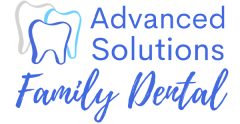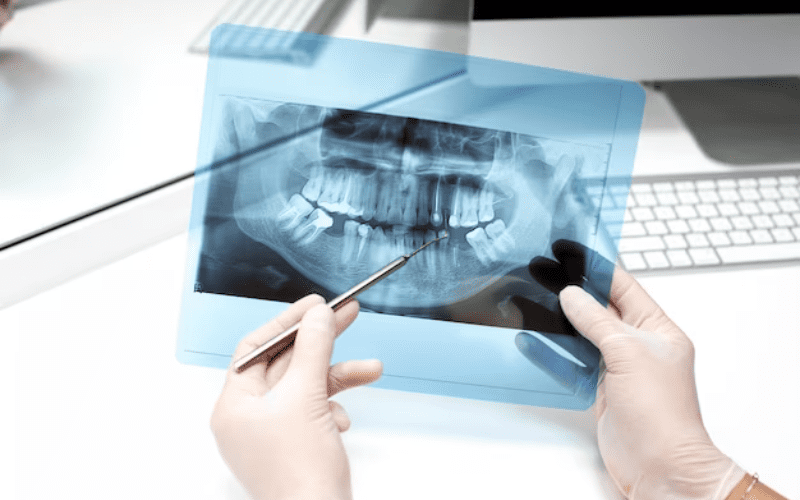The field of dentistry has significantly changed throughout the years, with one of the most notable advances being in the field of dental radiography. These imaging techniques have evolved into vital tools for dentists, giving crucial insights into dental health that the human eye cannot. We shall uncover the secrets of dental radiographs in this research, providing light on the critical forms that play roles in detecting and treating oral health disorders.
What Is a Dental Radiograph?
Dental radiography is a diagnostic technology that uses X-ray imaging to acquire precise pictures of oral tissues, allowing dentists to pinpoint regions that would otherwise be missed during standard examinations. It helps with early identification, treatment planning, and general dental health care. Because of its non-invasive nature, it is crucial in modern dentistry.
The Benefits Of Dental Radiography:
Dental radiography, or dental X-rays, is crucial in modern dentistry by providing valuable diagnostic information. Here are five benefits of dental radiography:
1. Early Detection of Dental Issues
Dental radiographs enable dentists to detect dental problems early before they become visible to the naked eye. This includes identifying cavities, gum diseases, and other oral conditions that may not be apparent during a routine clinical examination. Early detection allows for prompt intervention and preventive measures, minimizing the severity of the issue.
2. Comprehensive Examination of Tooth and Bone Structures
Dental X-rays provide a detailed view of tooth and bone structures, offering a comprehensive assessment of the entire oral cavity. This allows dentists to evaluate the health of teeth roots, jawbones, and surrounding tissues. It is precious in assessing the development of teeth in children, identifying abnormalities, and planning orthodontic treatments.
3. Treatment Planning and Precision
Dental radiography plays a crucial role in treatment planning. Dentists use X-rays to assess the extent of dental problems, plan for surgeries, and determine the most effective treatment approach. This precision is essential for tooth extractions, root canal treatments, and dental implant placements, ensuring accurate and successful outcomes.
4. Monitoring Oral Health Changes Over Time
Regular dental radiographs allow dentists to monitor changes in oral health over time. By comparing current X-rays with previous ones, dentists can track the progression of dental conditions and assess the effectiveness of ongoing treatments. This longitudinal approach helps adapt treatment plans and maintains optimal oral health.
5. Patient Education and Communication
Dental radiographs serve as powerful visual aids for patient education. They allow dentists to explain the nature and severity of dental issues and recommend treatments more effectively. When patients can see the visual evidence of their oral health, they are more likely to understand the importance of recommended treatments and preventive measures, promoting active participation in their dental care.
In summary, dental radiography is a valuable tool in dentistry, providing essential diagnostic information, aiding in treatment planning, and facilitating effective communication between dentists and patients.
The Foundation: Intraoral Radiographs
Intraoral radiographs, the fundamental imaging technique that includes inserting the film or sensor within the patient’s mouth, are at the core of dental radiography. Intraoral radiographs are classified into various subtypes, each providing a distinct viewpoint on oral health.
1. Bitewing Radiographs:
Bitewing radiographs, one of the most frequent, are named after the little tabs or wings that patients bite down on to keep the film or sensor in place. These radiographs help diagnose cavities between teeth, determine bone levels, and monitor the supporting components’ general health.
2. Periapical Radiographs:
Periapical radiographs show the whole tooth, from the crown to the root and surrounding bone. Dentists utilize these pictures to identify problems such as abscesses, cysts, and anomalies in the tooth’s root structure.
3. Occlusal Radiographs:
Occlusal radiographs provide a complete look at the bite and tooth location by capturing a wide picture of the upper or lower jaw. This form of imaging is very beneficial in detecting developmental difficulties, such as the appearance of additional teeth or jaw structural anomalies.
The Panoramic Perspective: Panoramic Radiographs
Panoramic radiographs give a broader viewpoint than intraoral radiographs, which provide precise images of specific locations. A machine spins around the patient’s head, obtaining a panoramic picture of the oral cavity. Panoramic radiographs help evaluate general oral health and plan more elaborate operations.
Specialized Views: Extraoral Radiographs
Dentists may require expert views beyond normal intraoral and panoramic radiographs in specific scenarios.
1. Cephalometric Radiographs:
Cephalometric radiographs are pictures of the complete head that provide a side view of the patient’s skull. Orthodontists frequently use these photos to analyze the connection between the teeth and jaws, assisting in formulating efficient treatment regimens.
2. Cone Beam Computed Tomography (CBCT):
CBCT is a cutting-edge imaging technology that generates three-dimensional pictures of the oral and maxillofacial structures. It is especially useful in difficult circumstances, such as dental implant planning and identifying temporomandibular joint (TMJ) disorders.
Dental radiographs of various forms are essential diagnostic, treatment planning, and monitoring tools in the complex field of dentistry. From necessary intraoral radiographs to panoramic and expert views, each kind performs a distinct function in providing a complete picture of the oral cavity. As technology advances, the future offers more precise and efficient imaging techniques, strengthening dentists’ abilities to preserve and improve oral health.

